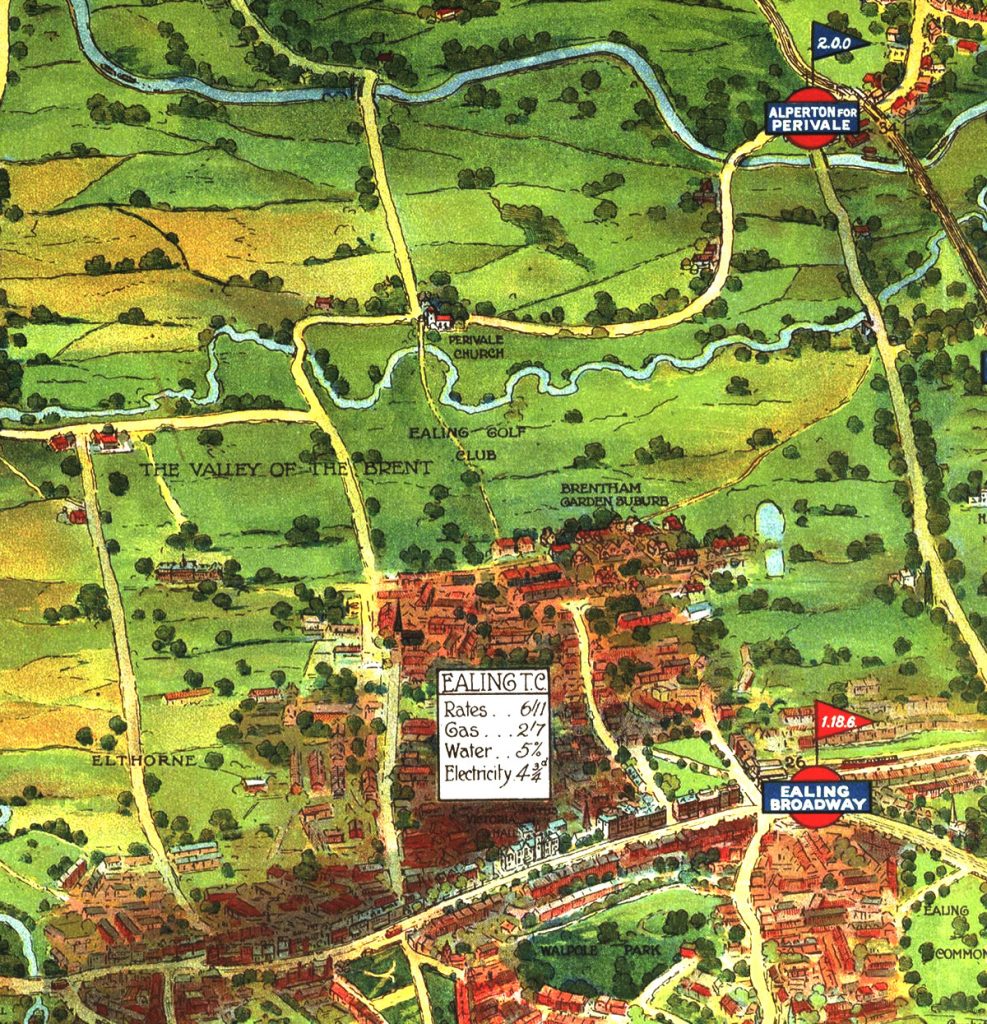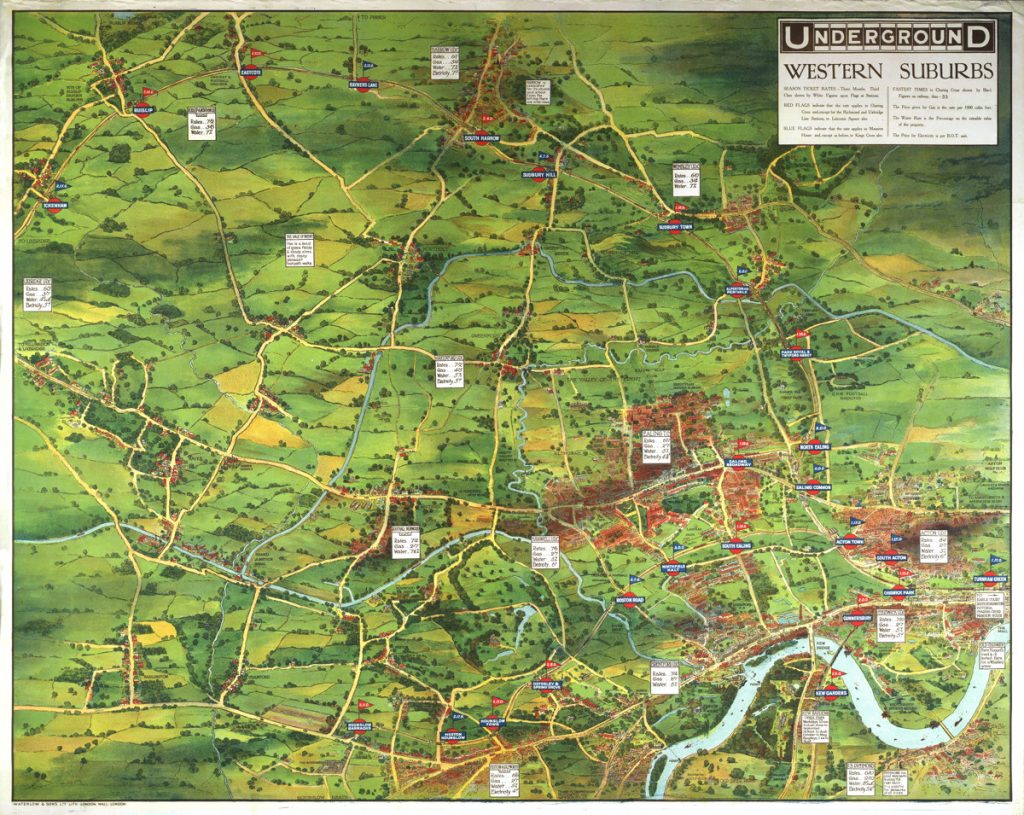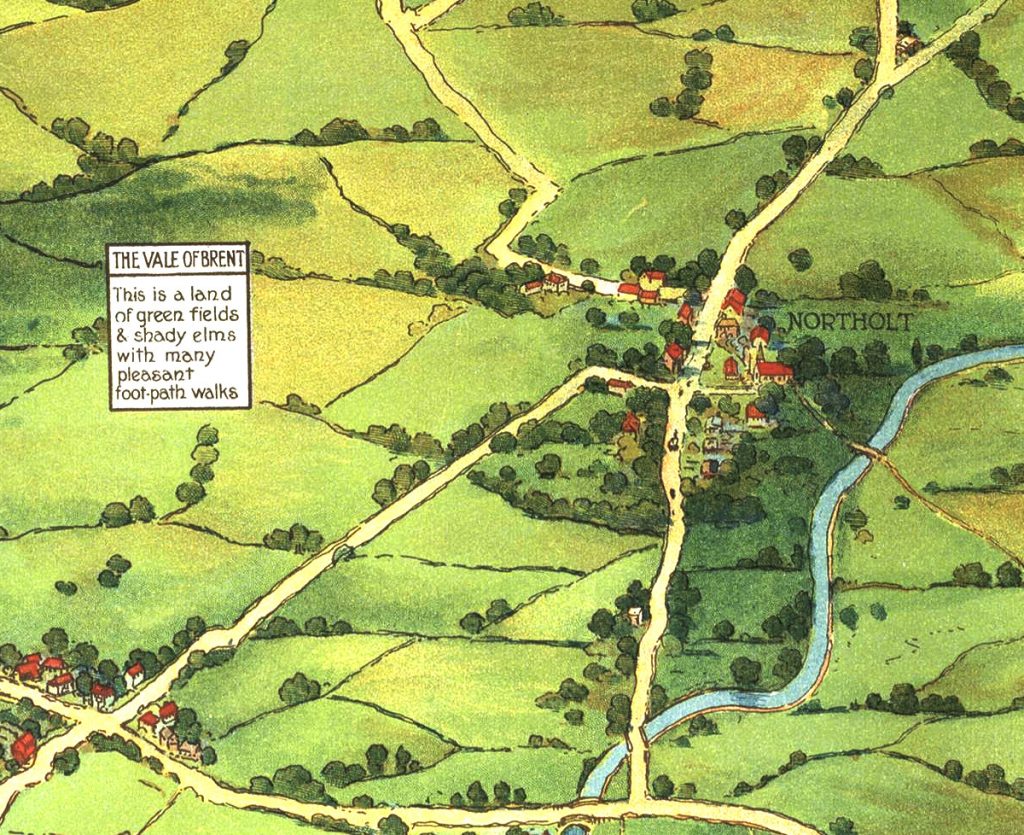
Drawn in a similar era to the historic map of Kew, here is another map from the archives of Transport for London at the Transport Museum, which show the green and bucolic land that now forms London’s suburbs, in the early 1900s – i.e. after the tube tracks and stations had been built, but before there were (many) houses. Its purpose was to promote how nice and rural the area was, to encourage people to up-sticks from the crowded inner London and start a new life here – while still using what are now TfL services to commute back in – thus guaranteeing a consistent revenue stream for the company. The basic costs of living in each community are helpfully included – what is now council tax, along with gas, water and electricity – all the services you need in a pre-internet era.
The map purports to be a birds-eye-view (or perhaps a balloon-eye-view, based on its time) looking north from somewhere above Kingston. Richmond is “a centre for pleasures of all kinds” and Kew Gardens is “open free”, while Brent is a “land of green fields and shady elms”, according to strategically placed boxes with captions.
A map of the same area today would be mainly covered by the classic 1930s “metroland” – endless rows of semi-detached family houses. Back then, it was a case of build the lines and they will come.

The map was drawn by Charles Sharland in 1912, and lithographically printed by Waterlow and Sons. It can be found on the London Transport Museum website, who also sell printed reproductions of it.


Western Suburbs — https://t.co/cFMgAji0u1
Western Suburbs https://t.co/eblyRxrWVI
I grew up in what was Kingsbury Village in Middlesex county and feel very fortunate of being told many stories of how that patch of what is now Greater London and right beside is Harrow and Barnet.
In Kingsbury there was much farm land and green spaces aswell as there being a passage for commuters that walked/ drove/ rode to London via a road and area what was known as Red Hill that many on this side of the river call Burnt Oak.
I have shared what I can remember of the stories with my youngest as he has a great interest in how things were and no doubt wishes certain ways of life and communities still existed.